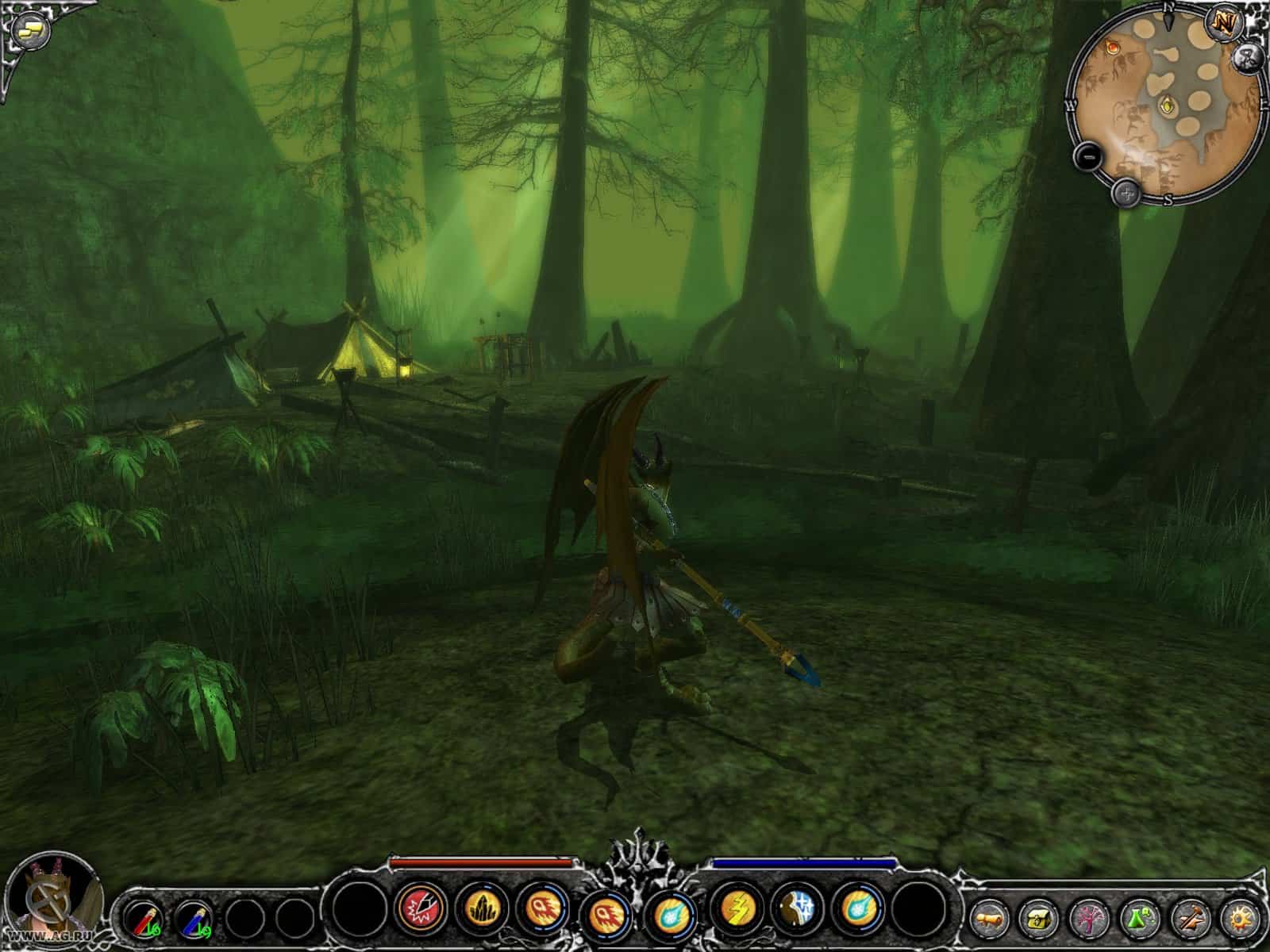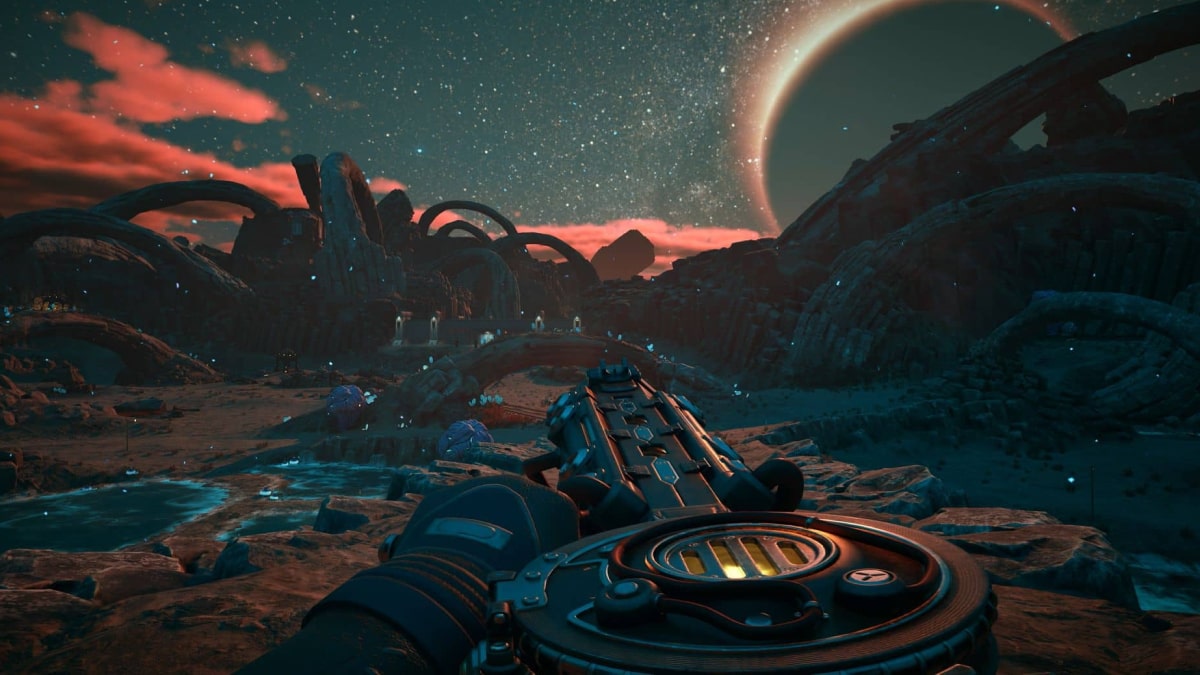You can trust VideoGamer. Our team of gaming experts spend hours testing and reviewing the latest games, to ensure you're reading the most comprehensive guide possible. Rest assured, all imagery and advice is unique and original. Check out how we test and review games here
When a genre is defined by a title over 6 years old, it isn’t good enough to just copy the formula and hope for the best. Instead, you need to come up with a new angle. Certainly in the dungeon-hack-and-slash realm, Diablo was king until its sequel came about. Since then many have tried but have been destined to remain mere Princes of the kingdom (the Dungeon Siege, Titan Quest, and X-Men games to name a few), so where in the monarchy will Mage Knight Apocalypse find itself?
Mage Knight Apocalypse is based on a tabletop miniature game from WizKids, though how much of the back-story and heritage is translated into the title I couldn’t possibly tell you. Nope, I hadn’t heard of it either. Still, the transition from tabletop to desktop is probably apt, in that you will loot, kill and explore the world known only as The Land in this hack-and-slash title – just like playing with the miniatures, then. Maybe.
Taking the predictable route of an evil spreading through The Land, you as an Oathsworn must purge this whilst recovering the five Aspects before facing-off with the big bad and preventing awful prophecies from coming true. The story, relayed mainly through the use of in-engine cutscenes, meanders along to its conclusion, never really engaging nor thrilling the player on the way. In part this is due to the rather clichéd and contrived script, wooden acting and uninteresting characters. However, as is true of many in the genre, the story is rarely the primary reason for playing.
On initial viewing, Mage Knight Apocalypse may appear to be another Diablo 2 clone, however, that would be doing the game a disservice. True, you get a pick of numerous characters of varying classes; each has multiple skill-trees (3 for each character), and combat is dealt with through judicious left and right-mouse button clicking. So far, so similar. When you actually start to play, however, you notice that this isn’t just some clone, it actually has some interesting ideas, and you may just feel your hopes being raised.
Indeed, there are some refreshing touches; gone is the concept of levels – your character takes a Morrowind/Dungeon Siege approach of increasing skills that you use. So if you want to increase strength, use your weapon. If you want a longer life bar, take damage and your health will increase. For the most part it is a pretty transparent system (and hovering the mouse over the stat will tell what skill to use for the biggest impact, with other actions providing a lesser effect), and works well, unlike the Dungeon Siege system that severely crippled you if a certain skill increased too quickly.
Also, because there are no levels nor traditional experience points, you get nothing for completing quests other than a warm fuzzy feeling in your stomach. There are also numerous enemies to kill, stacks and stacks of weapons, potions and armour to collect, plus the ability to increase the potency of your gear by adding magestones, which are graded by quality and element, and bestow various bonuses. You can also create potions once you have learned the recipe, using either ingredients scattered amongst the land or those bought from traders.
Furthermore, you do not fight alone for the duration of the game; no matter who you pick to play as, all the other Oathsworn join throughout your adventure, giving you a mini-party to direct, although the options are limited to attack, follow and wait. It’s good, too, that prior to joining you can pick which of their three skill-trees you want them to follow (although you have no control over what skills they actually have). It’s a small thing, but a nice touch, allowing you to decide what role you want each to fulfil. The graphics on occasion are quite eye-catching, interspersing some bright, colourful vistas in addition to the usual greys and browns often found in the genre, and other noticeable elements include the armour of your comrades, which changes over the course of the game. Again, a nice touch that adds nothing to the game, but is aesthetically pleasing.
Initial impressions are therefore favourable, but sadly the cracks start to appear pretty early on. You’ll almost instantly be perplexed by the fact that your inventory is limited to 25 spaces; when you consider how much the genre revolves around loot-gathering (ask anybody who put a lot of time into Diablo 2 on Battle.net), this is inexcusable, and a baffling decision. Also, you’ll soon realise that money is rendered all but pointless as you’ll find suitable weapons and equipment in the field. Path finding and AI also suffers, with the enemy rarely showing much desire to survive – as Sarus the mage, you can quite easily cast Wall of Fire in front of you and drink potions whilst the enemies in front burn, for example. The camera is also unhelpful, so you’ll constantly be adjusting the view to get a better look at the action. In fact, the user interface is poor in general. Skills, too, could have been handled better. Whilst you can utilise up to eight at a time, some are arbitrarily restricted to being usable with the right-mouse button only, and so juggling has to be done in-game (there is no pause when you want to mix things up or change equipment). It’s all a bit too clunky.
Some skills are hopelessly overpowered, too; for an easy game, choose to be Kithana and select her Vampiric skill tree to become almost invincible (you’ll know when). Some don’t increase your stats, either, and you are forced somewhat into using less-than-useful skills at times in order to progress up the tree. The enemies also scale with you in level (such that it is), so wherever you go (even if it is to a previously cleared area) your aggressors will always be that little bit healthier and better equipped than you.
The biggest fault, however, is the risk-and-reward system in place – in that there isn’t one. The premise is – for whatever reason – that there should be no punishment for player or NPC death; no lowering of skills, no loot lost, nothing. This is exacerbated by the fact that respawn points are rarely far from the action, meaning you can quickly get back into the fray. Whilst this may be viewed as a good thing, it totally destroys any need for self-preservation. Perhaps to counter this, and add to the relative ease of the game, later levels throw insane numbers of enemies at you, but it does little to help.
And yet in spite of this, there is something that keeps you plugging away, but what that something is exactly is hard to say. The story is cliché, the loot system is broken, the characters lack proper balance, and the online mode (yes, you can play co-op online with up to 4 other people) only alleviates the path finding problems. Countering that, though, is the well-intentioned (if not entirely well-implemented) skill system, a reasonably lush 3D world to explore, countless items to inspect and ignore, a crafting system that allows a plethora or combinations, and a variety in character choice, with a degree of customisation.
I won’t fall into the all-too-familiar reviewer trap of going down the ‘If you liked that you’ll enjoy this’ route, and instead simply say this: Mage Knight Apocalypse is a fairly average, poorly constructed game, built around some refreshing, interesting ideas, and you’ll probably be frustrated at what could have been more often than you’re entertained. There is some enjoyment to be had over the couple of knights (ho-ho) it will take you to finish, but it will never claim the throne, instead being the sinister distant relative with the crazy ideas of world-domination. If that sounds okay to you, then give it a whirl.

/https://oimg.videogamer.com/images/b36f/mage_knight_apocalypse_42.jpg)






